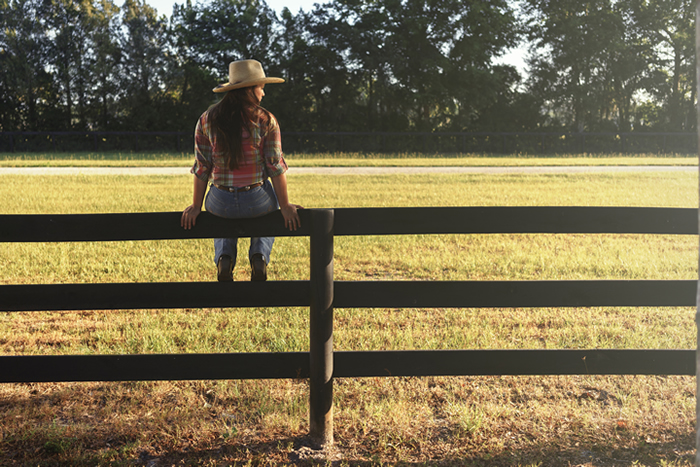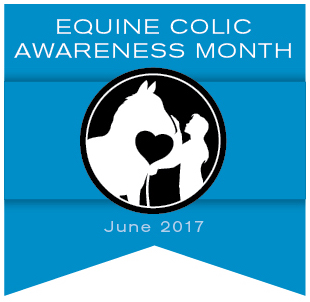
You come out to the barn to find your normally playful, inquisitive horse standing with his head in the corner, ignoring you. Or, perhaps your horse is pawing and turning around to look at his belly or, worse, thrashing and rolling around in his box. You’re 99 percent sure it’s colic (that is, pain in the horse’s abdomen), so you call the vet.
But now what?
First, Make Your Horse Comfortable
Unfortunately, there’s not a lot you can do physically to help your horse’s pain before the vet arrives. But here’s what you should (and shouldn’t) do.
Do this:
- Do a safety check in your horse’s stall. There shouldn’t be anything sharp or dangerous in your horse’s stall, but re-evaluate it now. Could your horse catch a hayrack or feed bucket with a flailing hoof or tossing head? If so, remove it (or your horse) to someplace safer.
- Remove all feed whether or not you know what caused the colic or if there may be a blockage. It has been commonly advised that water should be removed as well. This is only advisable in the rare case of a horse with a distended stomach, and horses in this condition are unlikely to drink. On the other hand, dehydration is a more common contributor to colics, so removal of water is more likely to be detrimental. Therefore, while waiting for the veterinarian, the best course is to provide water, but don’t force it.
- Administer Banamine (Flunixin meglumine) — if advised by your veterinarian. After talking through the symptoms with you, your vet may recommend an appropriate dose of Banamine (flunixin meglumine), an NSAID that might make him more comfortable. If your vet doesn’t explicitly tell you to give your horse an NSAID though, don’t.
- Take your horse’s vitals. Take your horse’s temperature and heart rate. Normal temp for a horse is 99 to 101° F (37.2 to 38.3° C), and resting heart rate should be between 36-44 beats per minute.
Don’t do this:
- Do not give mineral oil (or any other liquid). While you might have seen your vet administer mineral oil via nasogastric tube, don’t attempt to DIY this, as it’s easy to damage the horse’s nasal passages, throat or trachea. It’s also far too easy to kill a horse if the tube ends up in your horse’s windpipe, not his esophagus.
- Do not give any kind of home remedy, such as castor oil or over-the-counter remedies with bella donna extract, which can have disastrous consequences in more serious cases of colic.
- In general, avoid giving your horse anything without your vet’s explicit permission, as a dose of the wrong pain med, or too much pain med, will mask the symptoms your vet needs to evaluate. Also, horses can easily aspirate liquids into the lung that are administered forcibly. It’s not worth the risk.
- And don’t even think about inserting anything into the horse’s rectum. It’s impossible to manually clear a blockage with your hand, a tube, or anything else, and a rectal tear can be fatal. Likewise, avoid giving your horse an enema. Simply wait for the vet.
Then, Walk Your Horse — Maybe
We’ve all seen the horse films where the horse owner walks his or her horse to exhaustion, effectively “walking off” the colic until the horse miraculously gets better. Walking can help in some cases — but not all. Vets estimate that about 50 percent of mild colics clear up as a result of walking, as it can stimulate gut motility. However, in the other 50 percent of cases, walking does nothing, and may even make your horse more uncomfortable. When considering whether to walk or not, take the following into consideration:
- Only walk your horse if your vet approves it upon hearing the symptoms over the phone.
- Don’t walk your horse to exhaustion; about 20-30 minutes of brisk walking should be sufficient to restart gut motility. Exercising too vigorously or to exhaustion can actually slow gut motility and lead to dehydration and exhaustion.
- If your horse is comfortable, not thrashing around or trying to roll or otherwise endangering himself, he may be fine standing or lying quietly in his stall until the vet arrives.
Prepare for What’s Next
While you’re waiting, start packing up your horse’s things and locating (or preparing) a trailer, in case your vet wants your horse to go to the hospital. If not, you should be prepared to stand constant vigil until your horse is out of danger. If you’re on your own, start calling friends who would be willing to help you, and make sure you’ve got the right clothes to keep watch comfortably. It should go without saying that you shouldn’t fall asleep or sit down in a stall next to a horse that’s still thrashing around.
Many people assume that once a horse has passed manure, it’s safe to resume feed and water as usual — but that’s not really the case. Instead, your vet can help you try to diagnose the type of colic your horse experienced, and then help put a post-colic feeding plan into play. The feeding plan will differ based the type of colic your horse experienced and the area of the horse’s gut it affected.
Since there are many types and causes of colic, the reintroduction of feed into your horse’s diet should be considered carefully. Regardless of the type of colic suffered, your vet will doubtless recommend only high-quality feed, access to plenty of fresh, clean water and a watchful eye as he recovers.
Practice Good Feeding and Care Habits to Help Avoid Colic
Colic is every horse owners’ worst nightmare because there’s simply no way to guarantee against it. There are many different types of colic: gas colic, stress colic, impaction/compaction colic, sand colic, enteroliths, pedunculated lipomas, displacements and torsions – to name a few. Unfortunately, many colics are idiopathic, meaning the specific cause is undiagnosed. While your vet might have a good idea, surgery is generally the only way to diagnose a colic cause and presentation with certainty.
However, recent research suggests that many colics result from less than ideal digestive health related to the ways we feed and care for our horses, such as feeding concentrates and restricting turnout for more than a few hours a day, or a sudden change in diet. Horses can benefit from a more carefully regimented husbandry plan so you don’t have to practice what to do while waiting for the vet to arrive.
Download our FREE colic e-books to learn more about the factors that lead to colic and understanding the risks and how to avoid them.






